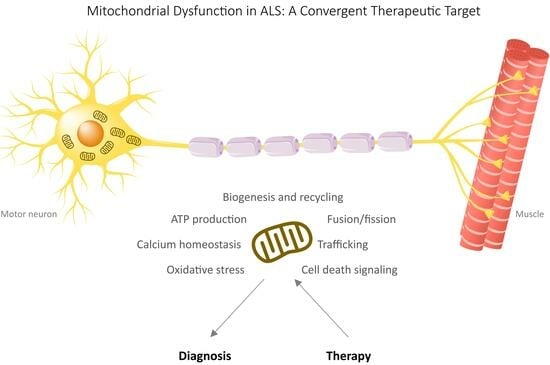Feature Papers in Mitochondria
A topical collection in Cells (ISSN 2073-4409). This collection belongs to the section "Mitochondria".
Viewed by 2711
Share This Topical Collection
Editor
 Prof. Dr. Paolo Bernardi
Prof. Dr. Paolo Bernardi
 Prof. Dr. Paolo Bernardi
Prof. Dr. Paolo Bernardi
E-Mail
Collection Editor
Department of Biomedical Sciences, University of Padova, Via Ugo Bassi 58/B, I-35131 Padova, Italy
Interests: mitochondria; calcium; channels; permeability transition; ATP synthase; cell death
Special Issues, Collections and Topics in MDPI journals
Topical Collection Information
Dear Colleagues,
This Topical Collection, "Feature Papers in Mitochondria", aims to publish high-quality research articles, review articles and communications from all fields that study the topic of mitochondria, with a focus on cell biological research. The aim of this Topical Collection is to illustrate, through selected works, the state-of-the-art research related to various aspects of mitochondria in diseases. We especially encourage the Editorial Board Members of Cells to contribute papers reflecting the latest progress in their research field. In addition, further experts in relevant research fields are welcome to submit their work to this Topical Collection.
Prof. Dr. Paolo Bernardi
Collection Editor
Manuscript Submission Information
Manuscripts should be submitted online at www.mdpi.com by registering and logging in to this website. Once you are registered, click here to go to the submission form. Manuscripts can be submitted until the deadline. All submissions that pass pre-check are peer-reviewed. Accepted papers will be published continuously in the journal (as soon as accepted) and will be listed together on the collection website. Research articles, review articles as well as short communications are invited. For planned papers, a title and short abstract (about 100 words) can be sent to the Editorial Office for announcement on this website.
Submitted manuscripts should not have been published previously, nor be under consideration for publication elsewhere (except conference proceedings papers). All manuscripts are thoroughly refereed through a single-blind peer-review process. A guide for authors and other relevant information for submission of manuscripts is available on the Instructions for Authors page. Cells is an international peer-reviewed open access semimonthly journal published by MDPI.
Please visit the Instructions for Authors page before submitting a manuscript.
The Article Processing Charge (APC) for publication in this open access journal is 2700 CHF (Swiss Francs).
Submitted papers should be well formatted and use good English. Authors may use MDPI's
English editing service prior to publication or during author revisions.
Published Papers (2 papers)
2024
Open AccessArticle
Cooperation of Various Cytoskeletal Components Orchestrates Intercellular Spread of Mitochondria between B-Lymphoma Cells through Tunnelling Nanotubes
by
Henriett Halász, Viktória Tárnai, János Matkó, Miklós Nyitrai and Edina Szabó-Meleg
Viewed by 798
Abstract
Membrane nanotubes (NTs) are dynamic communication channels connecting spatially separated cells even over long distances and promoting the transport of different cellular cargos. NTs are also involved in the intercellular spread of different pathogens and the deterioration of some neurological disorders. Transport processes
[...] Read more.
Membrane nanotubes (NTs) are dynamic communication channels connecting spatially separated cells even over long distances and promoting the transport of different cellular cargos. NTs are also involved in the intercellular spread of different pathogens and the deterioration of some neurological disorders. Transport processes via NTs may be controlled by cytoskeletal elements. NTs are frequently observed membrane projections in numerous mammalian cell lines, including various immune cells, but their functional significance in the ‘antibody factory’ B cells is poorly elucidated. Here, we report that as active channels, NTs of B-lymphoma cells can mediate bidirectional mitochondrial transport, promoted by the cooperation of two different cytoskeletal motor proteins, kinesin along microtubules and myosin VI along actin, and bidirectional transport processes are also supported by the heterogeneous arrangement of the main cytoskeletal filament systems of the NTs. We revealed that despite NTs and axons being different cell extensions, the mitochondrial transport they mediate may exhibit significant similarities. Furthermore, we found that microtubules may improve the stability and lifespan of B-lymphoma-cell NTs, while F-actin strengthens NTs by providing a structural framework for them. Our results may contribute to a better understanding of the regulation of the major cells of humoral immune response to infections.
Full article
►▼
Show Figures
Open AccessReview
Mitochondria: A Promising Convergent Target for the Treatment of Amyotrophic Lateral Sclerosis
by
Teresa Cunha-Oliveira, Liliana Montezinho, Rui F. Simões, Marcelo Carvalho, Elisabete Ferreiro and Filomena S. G. Silva
Cited by 2 | Viewed by 1711
Abstract
Amyotrophic lateral sclerosis (ALS) is a devastating neurodegenerative disease characterized by the progressive loss of motor neurons, for which current treatment options are limited. Recent studies have shed light on the role of mitochondria in ALS pathogenesis, making them an attractive therapeutic intervention
[...] Read more.
Amyotrophic lateral sclerosis (ALS) is a devastating neurodegenerative disease characterized by the progressive loss of motor neurons, for which current treatment options are limited. Recent studies have shed light on the role of mitochondria in ALS pathogenesis, making them an attractive therapeutic intervention target. This review contains a very comprehensive critical description of the involvement of mitochondria and mitochondria-mediated mechanisms in ALS. The review covers several key areas related to mitochondria in ALS, including impaired mitochondrial function, mitochondrial bioenergetics, reactive oxygen species, metabolic processes and energy metabolism, mitochondrial dynamics, turnover, autophagy and mitophagy, impaired mitochondrial transport, and apoptosis. This review also highlights preclinical and clinical studies that have investigated various mitochondria-targeted therapies for ALS treatment. These include strategies to improve mitochondrial function, such as the use of dichloroacetate, ketogenic and high-fat diets, acetyl-carnitine, and mitochondria-targeted antioxidants. Additionally, antiapoptotic agents, like the mPTP-targeting agents minocycline and rasagiline, are discussed. The paper aims to contribute to the identification of effective mitochondria-targeted therapies for ALS treatment by synthesizing the current understanding of the role of mitochondria in ALS pathogenesis and reviewing potential convergent therapeutic interventions. The complex interplay between mitochondria and the pathogenic mechanisms of ALS holds promise for the development of novel treatment strategies to combat this devastating disease.
Full article
►▼
Show Figures








